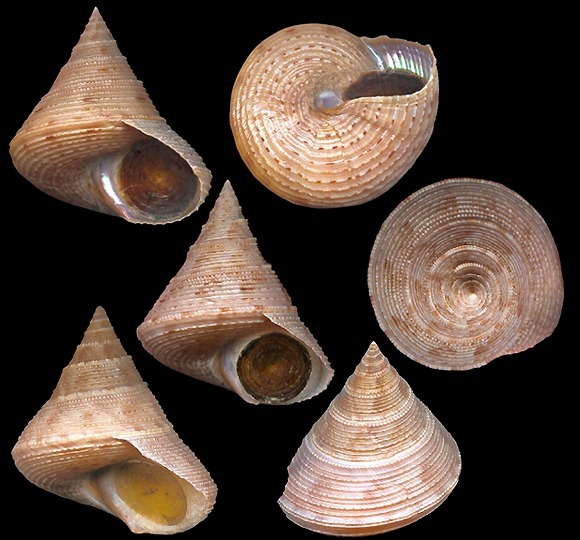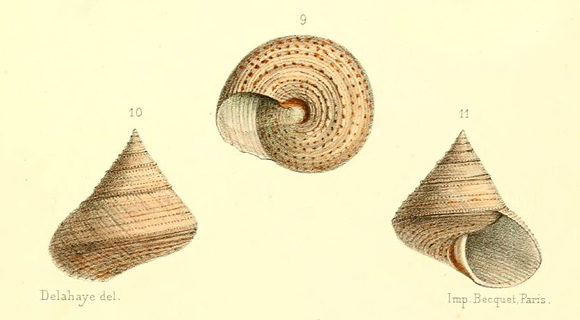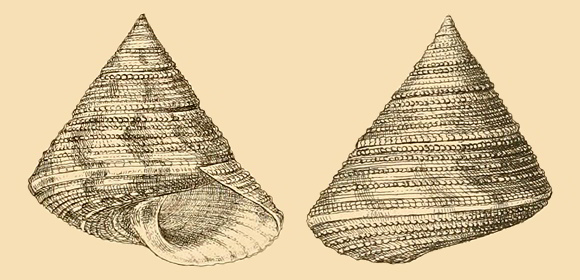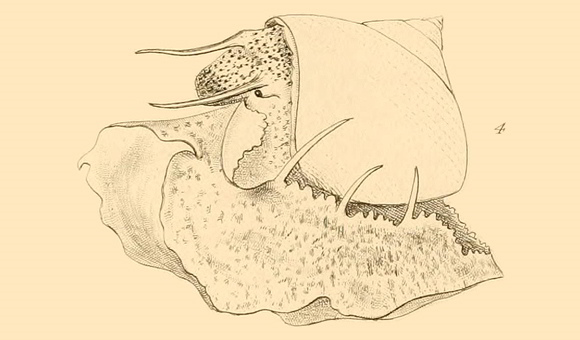
Predator on sessil preys.
Protonym: Trochus granulatus.
Synonyms: fragilis, papillosus, tenuis. There is also a variant “lactea” given by Jeffreys, from SW. Cornwall.
« Testa imperforata, conica, striis transversis tenuissimis, & granulatis, alternatim majoribus ; suturis emarginatis. » – I. E. von Born: Index rerum naturalium Musei Caesarei Vindobonensis vol. I, Vienna 1778.
30-40m deep, on mud, Málaga, Andalucia, S. Spain. 27-32mm.


« Shell acutely conical, imperforate, thin; light,
corneous or flesh-colored, more rarely rich orange, unicolored or sparsely articulated on the basal riblets with rich brown, and frequently with rather obscure clouded maculations of pale brown above. The surface is shining, closely sculptured by numerous narrow threads or riblets, which on the spire are contiguous, finely, regularly beaded, becoming more separated on the last whorl, the interstices obliquely striate, the spiral riblets either granulate or nealy smooth; base with numerous concentric lirulae, granose or nearly smooth, the interstices radiatel striate » – H. A. Pilsbry: Manual of conchology, ser.1 vol. XI, Philadelphia 1889.

« The spire is elevated, slender, its outline concave ; apex minute, apical whorls smooth, rounded ; suture linear, its position marked by a slightly prominent double granose cingulus above it. Whorls about 8, flat, the last strongly angular at the periphery, convex beneath. Aperture subquadrate, finely sulcate inside ; columella subvertical, arcuate, cylindrical. » – H. A. Pilsbry: op. cit.

« The animal is much larger in proportion to the shell than that of any other native Trochus. It is of a general whitish hue, with brown markings. The head terminates in a strong and thick muzzle, much speckled with brown. On each side is a subulate smooth tentacle, marked with a brown line down its centre. The eye-peduncles are stout and white, and the eyes blue. The head-lobes are nearly obsolete. The neck-lappets are very large, white, and even, or only obsoletely crenated at their edges. The lateral lobes are white, rugosely crenate, and bear three white filaments at each side. The sides of the foot are very broad, and thickly speckled with brown. The very large foot is lanceolate truncate in front, with mucronated angles, and terminating in a point behind. » – Forbes & Hanley: op. cit. p501.